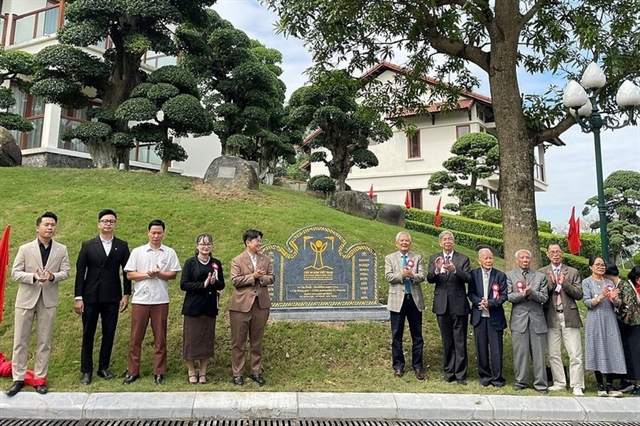 Environment
Environment

Officials are deeply concerned about the “serious degradation” of water quality in the Đồng Nai River basin.
 |
| Đồng Nai River at the confluence with Linh Stream in Tam Hiệp ward of Biên Hoà City in the southern province of Đồng Nai. The river is facing serious pollution, worrying local residents and authorities. — Photo baodongnai.com |
ĐỒNG NAI — Officials are deeply concerned about the “serious degradation” of water quality in the Đồng Nai River basin.
Their anxiety was conveyed at the recently held 10th meeting of the Environmental Protection Commission of the Low Catchment Basin of the Đồng Nai River.
This river’s catchment area covers 11 provinces and cities, including Đồng Nai, Bình Dương, Bình Phước, Bà Rịa – Vũng Tàu, Tây Ninh, Long An, Đắk Nông, Ninh Thuận, Bình Thuận, Lâm Đồng and HCM City.
From a socio-economic development perspective, the basin covers a crucially important region in the country.
The Đồng Nai River supplies water to almost 20 million people living in urban areas and industrial zones in the lower basin. However, the increasing demand for water has caused serious problems with the surface water in the lower basin, with very serious contamination in some areas, particularly provinces situated in the southern economic region.
Huỳnh Anh Minh, Vice Chairman of the Bình Phước People’s Committee, said his province has three distributaries of the Đồng Nai River – the Bé, Sài Gòn and Đa Dâng rivers. However, the water of all the three rivers are contaminated with effluents from production units, industrial parks, poultry farms, healthcare clinics and other establishments. Everyday, some 29,700 cubic metres of effluents are dumped in the river, but as of now, only 70 dumping sources have been identified.
Referring to another problem that threatens the health of the nation’s river systems, Nguyễn Toàn Thắng, Director of HCM City Department of Natural Resources and Environment said the city is facing a lot of pressure in its natural resources management as well as the task of protecting the environment of neighbouring provinces.
In 2016, the city’s functional agencies seized and fined 37 boats mining sand from the rivers. In addition, city authorities also fined 15 boats transporting sand without proper papers, he said.
Bad to worse
Since 2003, protecting water sources in the Đồng Nai basin has been identified as the responsibility of all provinces sharing them. Thirteen years later, little progress has been made in protecting the environment, meeting participants agreed. In fact, they admitted that the problem has worsened, with the environmental quality deteriorating.
Annual reports from the Environmental Protection Commission have repeatedly said that the water in the Đồng Nai Basin is being seriously polluted by contamination of its tributaries. For example, HCM City dumps a huge volume of wastewater onto the Đồng Nai River basin everyday. Meanwhile, the water in the Đồng Nai River itself has been contaminated by water discharge from industrial production, households and solid waste from Bình Dương and other provinces. Worse still, the river’s water is also being contaminated by dioxin from the Biên Hòa airport.
Participants agreed on the need for strong, co-ordinated efforts by all provinces sharing the Đồng Nai Basin resources to protect the environment.
Senior officials from Long An Province said violators often dumped their waste into the river in areas adjacent to two provinces or localities. They knew that even if they were caught red-handed, it would not be easy for authorities to punish them because “it needed time for two localities/provinces to sit together to work out the sanctions.” — VNS